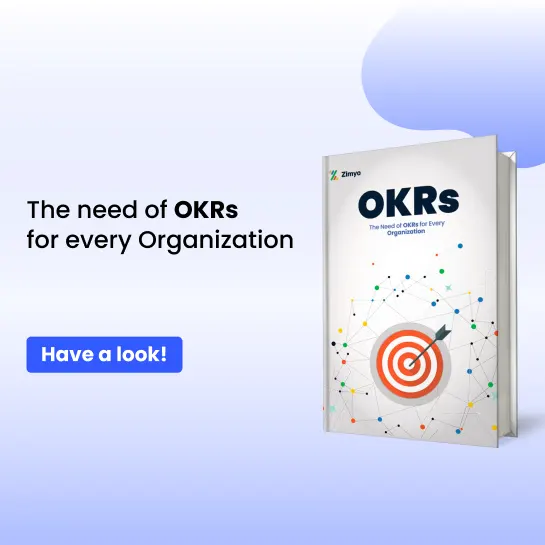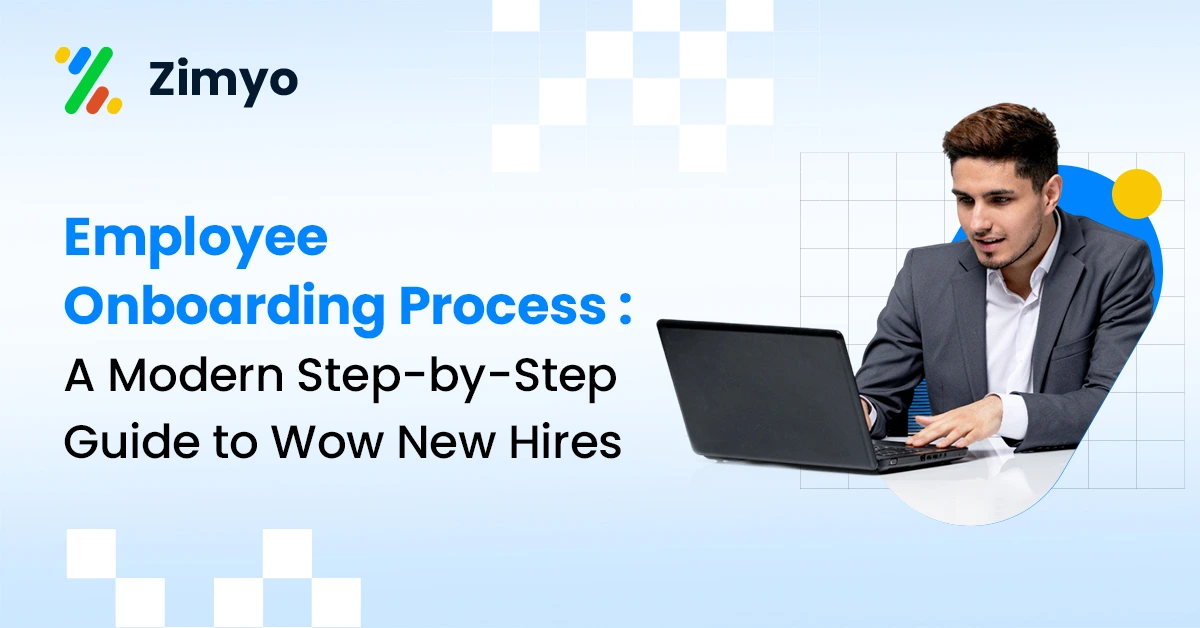In an era where job dissatisfaction is on the rise and the competition for top-tier talent is fierce, organizations recognize that a well-structured recruitment process is not just a necessity but a strategic imperative.
As we navigate this ever-evolving landscape of talent acquisition, it becomes evident that relying on traditional recruitment methods may no longer suffice. Thus organizations are continually seeking ways to enhance their recruitment processes to attract, assess, and secure the right talent.
To get the top talent for your organization, you need a strong recruitment process and strategy to have an edge over your competitors. In this article, we will delve into the top 15 recruitment strategies to ensure that you can attract the right individuals, streamline your hiring process, and make your company stand out as an employer of choice.
What is Recruiting?
Recruiting is a process of searching, identifying, attracting, and hiring the right people for the job vacancies in the organization. This process is headed by human resources managers with a team of recruiters, hiring managers, finance, and other stakeholders.
It is a very crucial function and involves a strategically planned recruitment process aiming at finding the right candidate to meet your organization’s needs. The key aspects of the recruiting process include:
- Identifying the potential candidates that have skills, experience, and personality as per the job requirements
- Screening and shortlisting resume
- Conducting rounds of interviews to assess the candidate’s skills
- Selecting the best-fit candidates for the role
- Assisting new hires in adapting to their new roles and integrating them into the organization through the onboarding process
15 Strategies for a Successful Hiring Process
1. Identify Organizational Needs
To begin with the recruitment process, the first step is to know your organization’s needs. Before drafting a job posting, create a list of your company’s needs, especially when creating new positions or altering responsibilities. Understanding these needs is crucial for attracting candidates who align with your company’s goals.
2. Define Clear Job Descriptions
Creating clear and thorough job descriptions is essential to a successful hiring process. Give a clear explanation of the expectations, duties, and functions associated with each position. This draws in qualified applicants and guarantees that they have a realistic grasp of the position.
3. Utilize Social Media
In today’s digital age, social media is a powerful tool for connecting with potential candidates. Candidates check your company details before applying for jobs to know your organizational culture and values to get a clear understanding. Thus, actively engage on social media platforms like LinkedIn, Twitter, and Instagram to showcase your company’s vision, mission, values, and job opportunities to attract the best talent.
4. Make use of Recruitment Software
Implement an Applicant Tracking System (ATS) to streamline and organize your recruitment process. You can post jobs, maximize job visibility, screen resumes, quickly identify potential candidates, manage applications, track candidate progress, and centralize communication.
The recruitment management software helps automate administrative tasks, enabling you to spend more time engaging with potential hires and hence contributing to a more efficient and effective hiring process.
Unlock Talent Excellence!
5. Utilize Employee Referral Programs
Employee referral programs are an effective way to leverage your existing workforce. Current employees are likely to recommend individuals who not only possess the required skills but also align with the company culture which can result in higher-quality hires. Encourage your existing employees to refer qualified candidates and offer them rewards in return for it. According to a report by Harvard Business Review, 70% more good hires are generated by referrals than other non-referral channels.
6. Build a Strong Employer Brand
It is essential to establish a positive employer brand to attract top talent. It communicates your organization’s values, culture, and success stories to potential candidates. Showcase these narratives on your company website and social media platforms as this will create an attractive image that resonates with candidates seeking a workplace that perfectly aligns with their values. A positive employer brand not only attracts new candidates but also contributes to employee retention and satisfaction.
7. Utilize Niche Job Boards
Along with traditional job boards, try to explore niche job boards that cater specifically to your industries or skill sets. This can be highly effective and valuable. Posting on these platforms ensures that job listings reach your targeted candidates with the expertise and qualifications relevant to the position. This targeted approach increases the chances of finding the right candidates and hence, the chances of hiring increase.
8. Conduct Thorough Pre-Screening
A thorough pre-screening assessment is essential before progressing to the interview stage. These assessments may include skills tests, personality assessments, or other relevant evaluations. Pre-screening helps in shortlisting candidates who align with your job requirements, ensuring that only the most qualified candidates move forward in the recruitment process.
9. Implement Structured Interview Processes
Designing a structured interview process is crucial for consistency and reliability. This involves developing a set of predetermined questions and determining a grading scale at each stage of the hiring process to assess both technical skills and cultural fit. Structured interviews minimize biases and provide a broad overview of each candidate, enabling the hiring team to make informed decisions based on a standardized evaluation process.
10. Maintain Effective Communication with Hiring Managers
A good recruitment process depends on recruiters and hiring managers working together effectively. Regularly communicate and maintain feedback loops to ensure that everyone involved is on the same page regarding the role’s requirements and the desired candidate profile. This collaboration enhances the efficiency of the recruitment process and contributes to better-informed hiring decisions.
11. Create a Positive Candidate Experience
A positive candidate experience is crucial for attracting and retaining top talent. This involves designing an intuitive application process, acknowledging applications promptly, and maintaining transparent communication about the hiring stages. Providing timely and constructive feedback, personalizing interactions, and respecting candidates’ time during interviews contribute to a favorable experience.
Investing in a great applicant experience helps you draw in top talent and build your employer brand since satisfied employees may become advocates and improve your company’s standing with potential employers.
12. Provide Skill Development Opportunities
Employees who are looking for long-term career growth would like to join an organization that provides a platform for growth and skill development. These are the right types of hires you need for your organization as they will grow individually and also help your company reach high heights. Thus showcasing opportunities for professional growth and skill development within the organization becomes a powerful recruitment strategy. This not only attracts potential candidates but also reinforces the company’s commitment to investing in its employees.
You can do this by highlighting training programs, mentorship opportunities, and career advancement paths that can make the company more appealing to candidates seeking continuous development.
13. Implement Diversity and Inclusion Initiatives
For the long-term success of any organization diversity and inclusion are very essential. With a diverse workforce comes diverse talent, skills, experiences, and perspectives. Implementing inclusive hiring practices combined with diversity contributes to a more innovative and creative workplace. Prioritizing diversity and inclusion enhances your organization’s reputation as an equal-opportunity employer thus attracting a broader pool of qualified candidates leading to good hires.
14. Use Flexible Recruitment Timelines
While efficiency is important, maintaining flexibility in recruitment timelines is equally crucial. Making rushed decisions could result in overlooking deserving candidates or choosing hastily. It is also not necessary to follow this process for all candidates as it may lead to excessive time spent on a few. The key is to maintain a balance to ensure a thorough evaluation without unnecessary delays. Timeline flexibility in the hiring process enables a more careful and thorough evaluation of applicants, which improves hiring choices.
15. Gather and Analyze Recruitment Metrics
For continuous improvement of the recruitment process, it is essential to implement key performance indicators (KPIs) to measure its effectiveness. Metrics like time-to-fill, cost-per-hire, and quality hire offer important information on how effective and successful the recruitment strategy is. Regularly analyzing these recruitment metrics allows you to identify areas for improvement, refine your approach, and thus ultimately build a more effective recruitment process.
What do you mean by Full Life Cycle Recruiting?
The term “full cycle recruiting” generally describes the recruiting process as a whole, from determining the need for a new hire to onboarding the chosen candidate. The stages of this all-inclusive method are as follows: job requisition, applicant sourcing, screening, interviewing, selection, and, in the end, hiring and employee onboarding. Overall, the goal of full-cycle recruiting is to effectively oversee the entire talent acquisition process, making sure that the company finds, assesses, and hires the most qualified individuals to meet its requirements.
Zimyo provides an end-to-end full life cycle recruiting process. Your hiring process can be made two times more rapid and effective by streamlining each step with the help of Zimyo recruitment management software. It provides features like candidate management by which you can enhance your candidate experience by redefining relationships with them from day zero to requisition management, and ATS. Recruiters can hire the right individuals with ease thanks to our recruiting software, which helps with everything from locating the ideal candidates to moving them through the onboarding process
FAQs
Recruitment is a process of searching, identifying, attracting, and hiring the right people for the job vacancies in the organization.
Some of the HR recruiting strategies are building an employer brand, utilizing employee referral programs, creating positive candidate experiences, and utilizing niche job portals. These efforts collectively aim to attract, engage, and hire the best-suited candidates for organizational success.
Talent acquisition teams utilize recruitment key performance indicators (KPIs) to track their progress and forecast their chances of achieving certain objectives. For continuous improvement of the recruitment process, it is essential to implement KPIs to measure its effectiveness.







